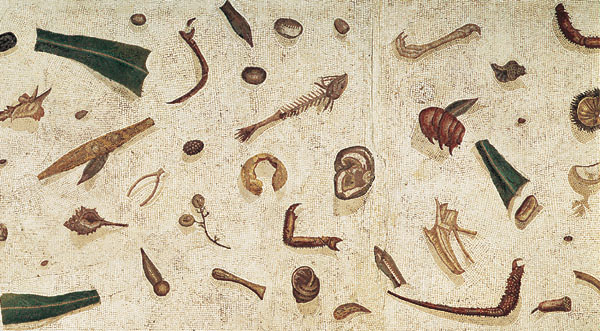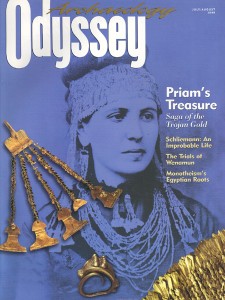Ancient Life: Table Manners?
An ancient mosaic gives us a bird’s-eye view.

When ancient Greeks asked, “Which way to the men’s room?” they weren’t trying to find a lavatory; they were looking for the dining room. The Greek aristocrat’s dining room, or
This mosaic fragment— found in 1833 in front of the Aurelian wall, south of Rome’s Aventine Hill—is a second-century A.D. reproduction of a popular design by the second-century B.C. Greek mosaicist Sosos. Signed by one Herakleitos, the mosaic depicts an
These stag banquets were usually followed by lavish drinking parties known as symposia. Ancient writings are scattered with lewd references to the courtesans and flute girls present at symposia—and to an excessive fondness for drink. (According to an anecdote by the historian Timaeus [c. 356–260 B.C.] of Tauromenium, in Sicily, one group of young men got so drunk they imagined they were on a storm-tossed ship; to keep their host’s house “afloat,” they tossed his furniture outside.)
Already a library member? Log in here.
Institution user? Log in with your IP address.

